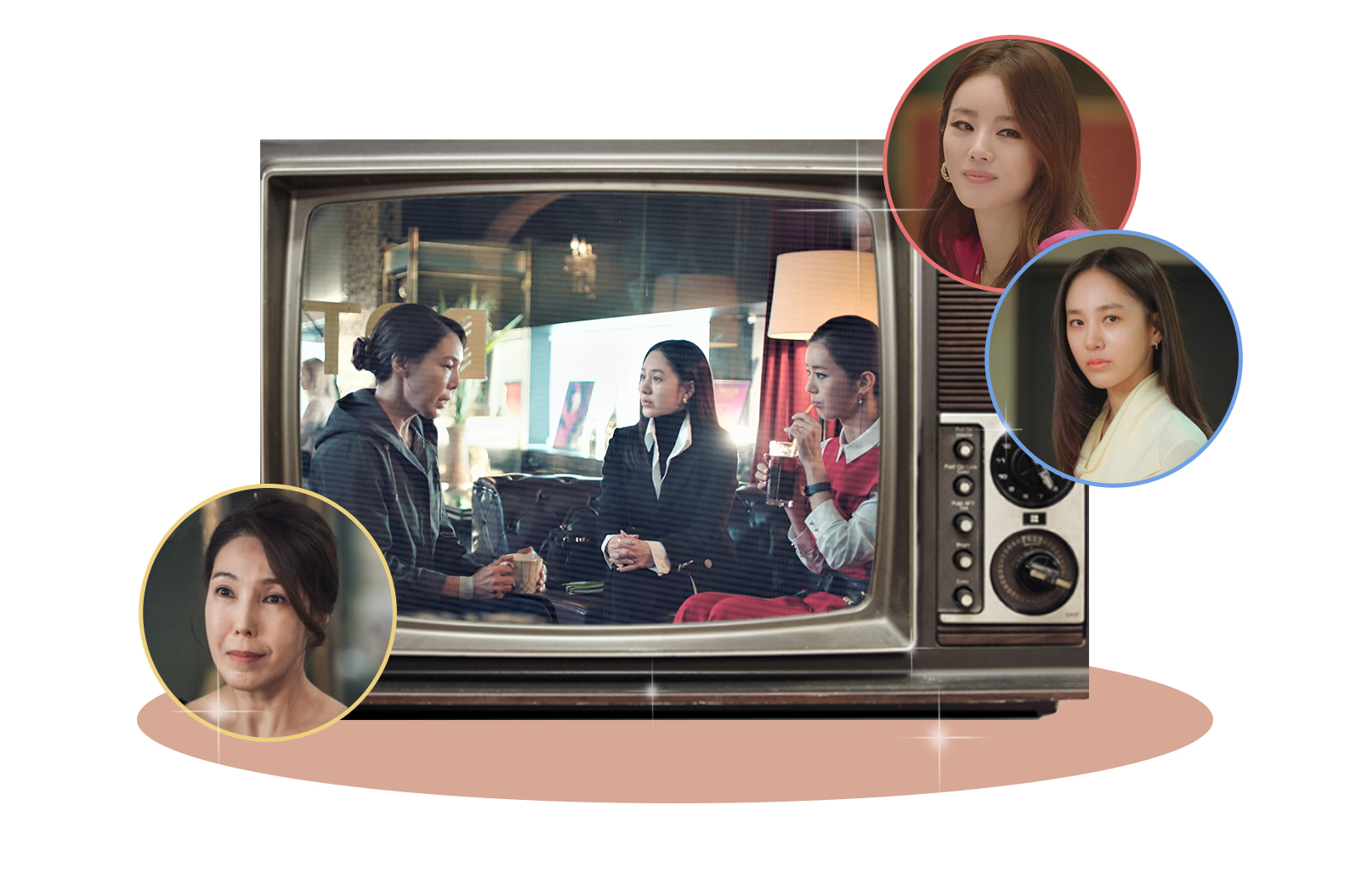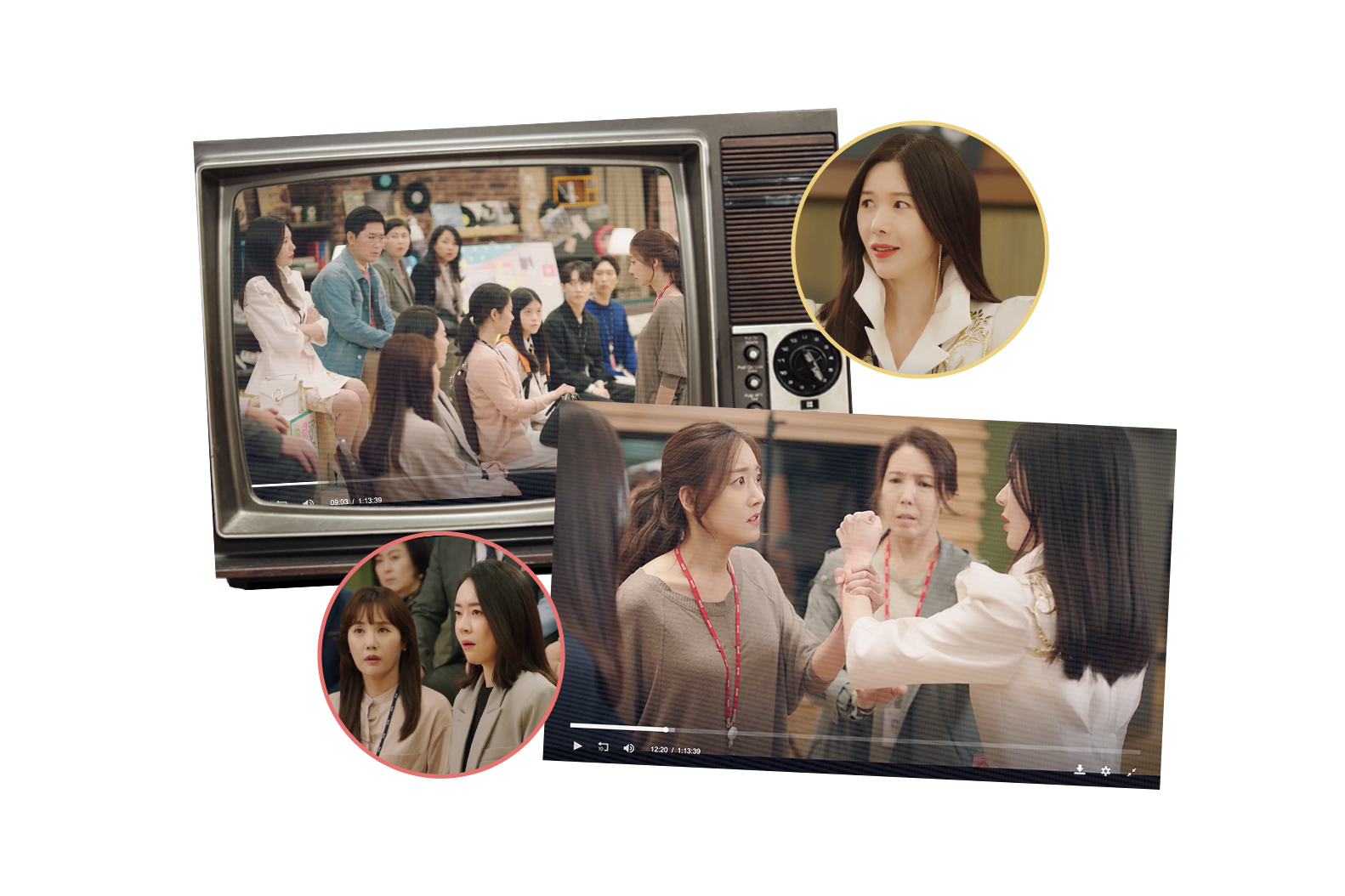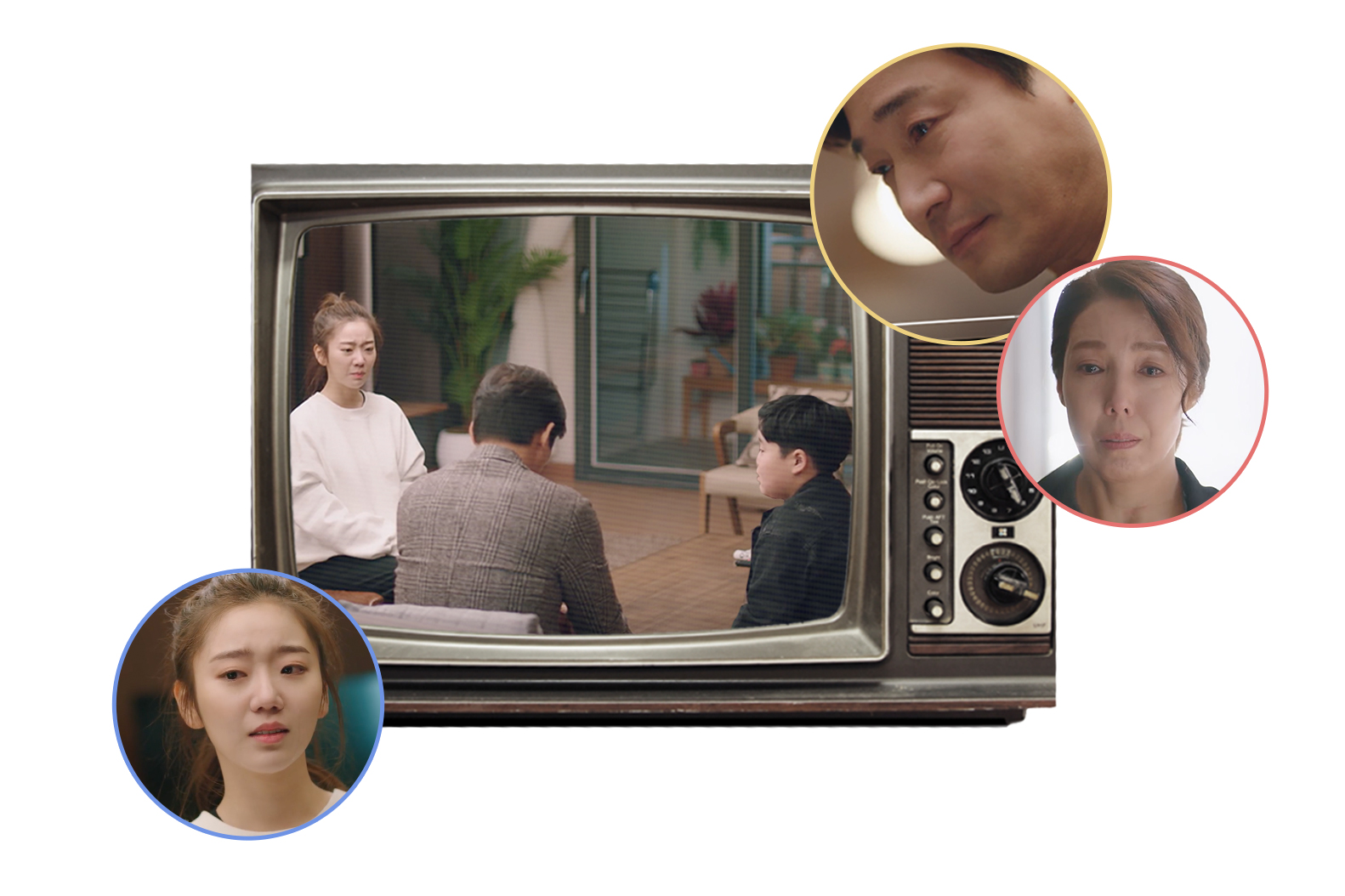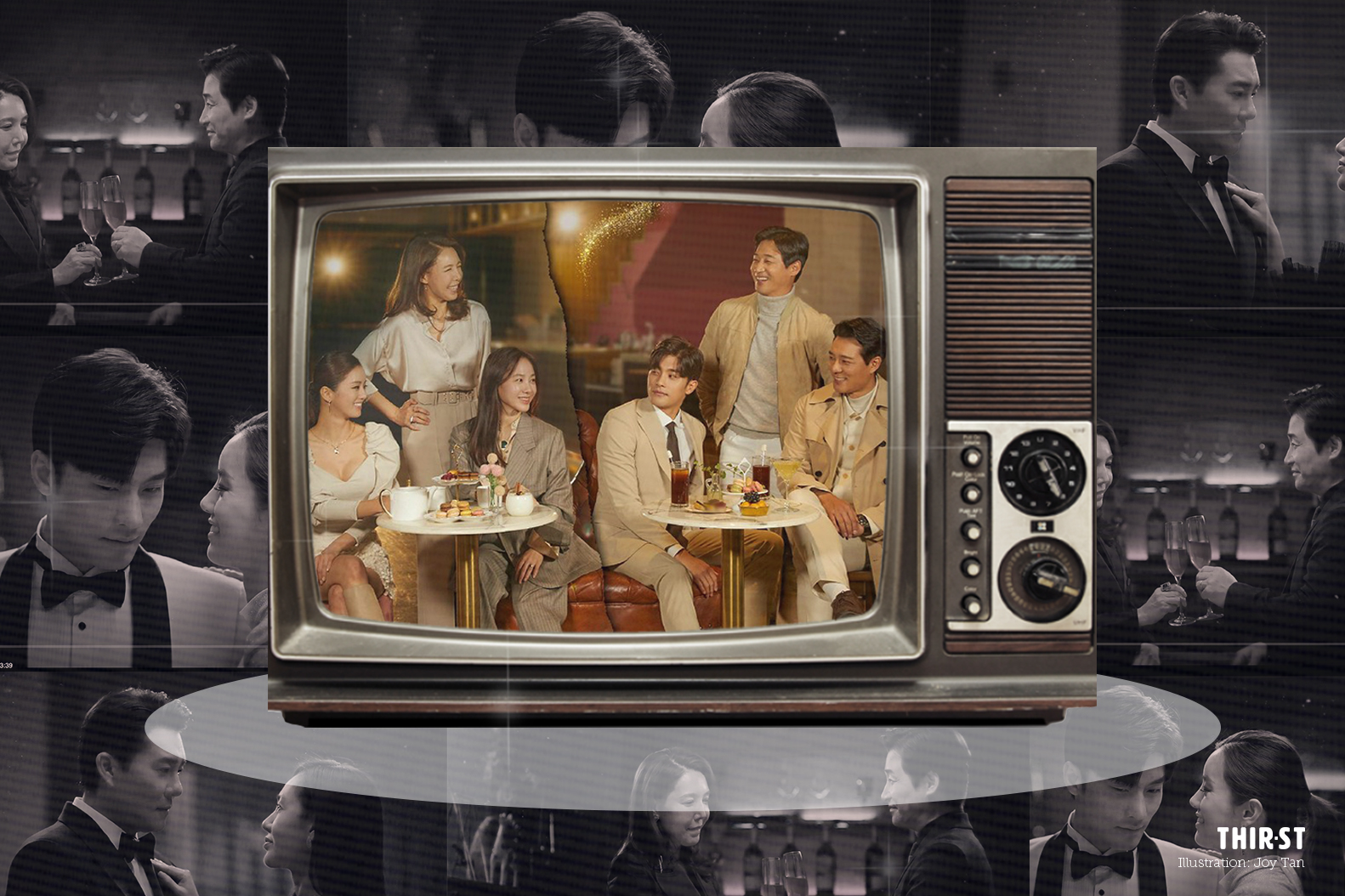Following the scandalous tale of these (very flawed) characters, the series rides on the tailwinds of embattled marriage stories like The World of the Married and The Penthouse: War in Life.
Like its predecessors, Love (ft. Marriage and Divorce) received praise for its realistic portrayal of marital conflict. It was for that reason that the show was suggested by a marriage mentor couple.
Recently, my girlfriend and I have been attending a Marriage Preparation Class (MPC) in church.
For us, the class has been a focused time to discuss what our ideas of marriage are, while discovering how that matches up to the the biblical ideal.
So the Netflix K-drama Love (ft. Marriage and Divorce) was a timely recommendation.
Set for a Season 2 premiere on Saturday (June 12), Season 1 traces the dissolution of three marriages. In this slow-burn anti-romance, three women are colleagues at a radio station, and at different stages in life and marriage.

30s: Hye-ryung is the radio DJ married to lawyer Sa-hyeon for three years. The couple has no children, and it seems that the glitz and glamour of the honeymoon phase is fast receding.
40s: Pi-young is the show’s producer who seems to have an all-round perfect marriage with Yu-shin, an established psychiatrist. On the surface, he is a romantic husband and a good father to Ji-a, their 12-year-old daughter.
50s: Si-eun is the programme writer, and a sacrificial mother and wife who is shocked when her husband of 31 years, Hae-ryun, asks for a divorce.
IS THIS SUPPOSED TO BE REAL LIFE?
Truthfully, I’m not a K-drama kind of guy, but I enjoyed this one.
I think what the show did best was to incite a reaction. It’s one that I hated to love and loved to hate, primarily because of its unlikeable characters that are hard to sympathise – let alone empathise – with.
Even so, I think the show points to some important questions.
1. Who’s responsible when a marriage breaks down?
The opening sequence of Love (ft. Marriage and Divorce) serves as the blueprint for the rest of the show.
At the radio station where the three wives work, a commotion erupts right before a live performance is broadcasted. A lady in the audience publicly confronts one of the show’s writers, who is revealed to be her husband’s mistress.
While she is being publicly humiliated, the rest of the audience casts their own judgements.
One remarks that the husband is the first to blame, before another remarks that it was the mistress’ fault for doing something morally wrong. Unable to remain silent, the mistress reveals that her accuser was no better than she, since she had manipulated her husband into marriage in the first place.
Needless to say, this scene was juicy. More importantly, however, apart from pointing out the many sides to a story, this scene also predicted the way viewers would react as the scandals unfolded.

At different points in the series, as the perspectives switched from wives’ to mistresses’, I found myself wondering who was to blame for each marital breakdown.
Cheating is wrong – no doubt about it. But all three marriages were already on the decline before any adulterous coup de grace.
I remember that one thing that was discussed during our MPC was the real danger of married couples finding themselves “drifting apart” or “falling out of love”.
In response, we were encouraged to regularly reflect on and evaluate our relationship. The underlying principle was that keeping a marriage intact takes effort from both parties.
One tip was to imagine the concept of a “love bank”, which requires intentionality to make more deposits – for instance, compliments, dates, acts of service like taking care of the kids – than withdrawals.
2. What is marriage supposed to look like?
At the emotional peak of the series, I found myself troubled.
Hae-ryun completely breaks down after being confronted by his daughter for his affair. It is in this scene that he says:
- “I’m just an ordinary man before being a father, a husband or a professor. These are things I can’t control. After all, I’m not God.”
- “Am I the only one to blame here? All men are the same.”
- “I truly believed that I’d love your mum forever, and I’ve strived to do so. Unprecedented situations happen. That’s what this is. My heart was stolen just the same way your mum had stolen it. I was helpless.”
We know that these are lame excuses for infidelity, but it was the complete unravelling of a fully grown man that made me think what he had said was genuine – he actually believed what he had said.

It was the hopelessness of it all that got to me. What Hae-ryun had painted was a deathly fatalistic picture of marriage.
How could that be realistic? Are all men really doomed to be like that?
Somewhat in line with this hopelessness were the cautions we were given during MPC. No, these warnings did not seek to inspire hopelessness, but they did highlight the difficulties of married life.
We talked about courtship deception – newlyweds who wonder if the person they had married was the same person before the wedding. We were told the five stages of marital death: disillusionment, hurt, anger, ambivalence and death of love.
If I were completely honest, marriage can be daunting.
3. What if marriage was designed to make us holy more than happy?
In our (almost) two years of dating, Julia and I haven’t been spared from disagreements. Time and again, I discover my own shortcomings surfacing one way or another. It could be an impatient word or a lingering insecurity.
But these moments point us back to our God, who is love. They show us that the love that we both need is a divine one.
Truth is, marriage will stretch a person – but that’s exactly the point.
In the Bible, marital imagery is often used to describe the union between Christ and the Church. It is with that understanding of sacrificial love in mind that believers strive towards.
Our reading assignment, Sacred Marriage, by Gary Thomas explains how a godly marriage is more to make us holy than happy. He makes his case clearest when he describes how marriage exposes our individual sin.
“Christian marriage presumes a certain degree of self-disclosure. When I gave my hand in marriage, I committed to allow myself to be known by Lisa – and that means she’ll see me as I am – with my faults, my prejudices, my fears and my weaknesses.
“This reality can be terrifying to contemplate… But here’s the challenge: Don’t give in to the temptation to resent your partner as your own weaknesses are revealed. Don’t run from what you are hearing about yourself, or push your spouse away because of it – accept it and use it to grow.
“Correspondingly, give them the freedom and acceptance they need in order to face their own weaknesses as well.”
Truth is, marriage will stretch a person – but that’s exactly the point. By being stretched, we become more Christlike. It’s a commitment to another person, but most importantly, to God.
Happiness alone cannot keep a relationship alive, even a K-drama can tell you that. Eventually, the honeymoon period fades and butterflies go away.
I’m thankful for the love that Julia still shows me when I’m unlovely. O the measure of grace to be fully known and fully loved!
That’s why our weekly prayer is for God to help us to learn to love each other better.
In this day where many no longer believe in marriage, Julia and I choose to cling to that ideal.
Even as we date with marriage in mind, we rest in the assurance that He will give us the grace and the strength to love as He has first loved us.
Until then, I pray that our relationship be Love (ft. God and Marriage). May He be the source and sum of our love.
- What are your attitudes towards marriage and why?
- What is the point of marriage? What is the point of singlehood? How can Christlikeness be the goal in both cases?
- How can you commit your relationship status to God? He hears you.










WARNING: SPOILERS ABOUND!